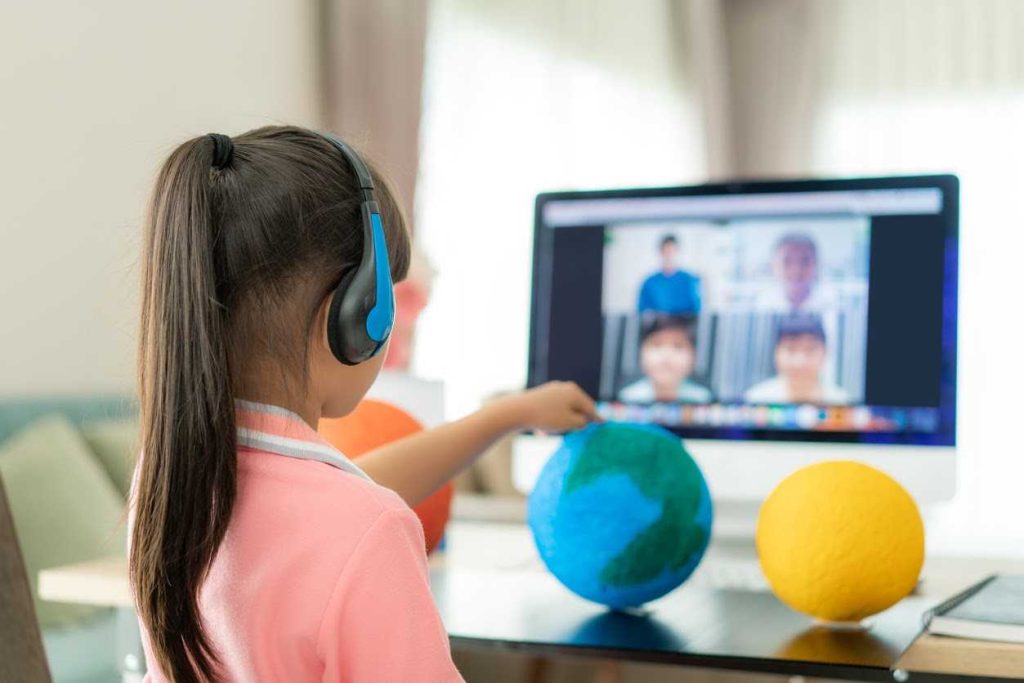In recent weeks, K-12 teachers have had to contend with the fact that they might teach their students remotely for the foreseeable future. Much of the discussion about remote teaching has centered on ensuring that the desired learning outcomes are attained. Here’s how you can make remote learning work for you and your students, while still ensuring student learning takes place.
Make Yourself Present while Maintaining Balance
During learning hours, make yourself available to your students and respond as promptly as possible. Students still want to know they are being heard and that they belong in your class community. Encourage students to ask questions, ask for help, and request feedback, while also empowering them to solve their own problems. To do this, establish a system for your students to seek help elsewhere before reaching out to you. This will not only lighten the load of your inbox, but also force your students to practice finding the answers for themselves. Once, they have tried contacting classmates or Googling the issue, they can then reach out to you.
On a similar note, put systems and boundaries in place for how students can engage with you beyond a lesson or school hours. Students and their families need to know you are there for them while also understanding that you will not respond during certain hours of the day.
Pick an LMS that Works for You and Stick with It
Find a learning management system (LMS) that supports your teaching style, your objectives, and your students. Often your school district will provide you with a free resouce to use, so it may be nice to start there. If not, find an LMS that works for you. Many free sites exist including Schoology, Blackboard, and Google Classroom. Whatever you choose, be consistent and try to keep your sight as organized and up to date as possible. It is also in your best interest to take the time to clearly communicate to students and families how to use the LMS, so everyone feels they can be successful when accessing and completing your class online.
Build Community
When teaching remotely, it’s essential to maintain a personal connection with students. Take the time to build relationships with your students and a sense of community with your whole class. This can be in the form of online surveys, online discussions or individualized emails. Like you would in a normal classroom setting, give students the opportunity to tell you, and the rest of the class, about what is going on in their lives outside of school. Celebrate everyone’s differences and help the class get to know each other, including you. This will not only help your students feel valued, but it will also encourage them to participate in and stay engaged with the remote learning process. Students will not care about you or your curriculum until they know you care about them, and this is especially true for online learning.
Make Your Lessons Interactive and Engaging
Although remote learning cannot replicate the classroom experience, try your best to ensure that your online classes are comprehensible and engaging. This can easily be done by first placing yourself in their shoes. When designing your LMS and your online lessons, look at things through the lens of your students to ensure your materials are easily accessible and to help students better understand what it is they are expected to do. While being empathetic, continue to incorporate other best practices to increase engagement like humor, movement, and real-world applications. Remember that many of your best practices utilized in person can be easily transferable to your onine classroom.
Provide Opportunities for Student Collaboration
Students learn more when they get the opportunity to collaborate. Placing your learners in virtual breakout rooms during your lessons allows them to participate in group work activities while accomplishing learning objectives. Online discussions and forums, a feature provided on most LMS sites, give your students a platform to mentor, communicate, support, and learn from one another. Having the learning take place online should not prevent students from being able to work together.
Provide Constant and Meaningful Feedback
Meaningful feedback is essential during the learning process in any setting, but may be even more crucial when the learning is taking place online. Students need to know their teachers care about their learning and want to help them succeed. Offering constant feedback during online lessons not only helps students to identify areas where they need to improve, but also encourage students to continue to engage with their online learning.
As a K-12 teacher, it’s important to continue your professional development, and Credits for Teachers can help. CFT provides self-paced online Professional Development courses for K12 teachers. Teachers who take our courses receive graduate credit from our university partner that can be used for salary advancement or license renewal. Learn more about the courses we offer today!




